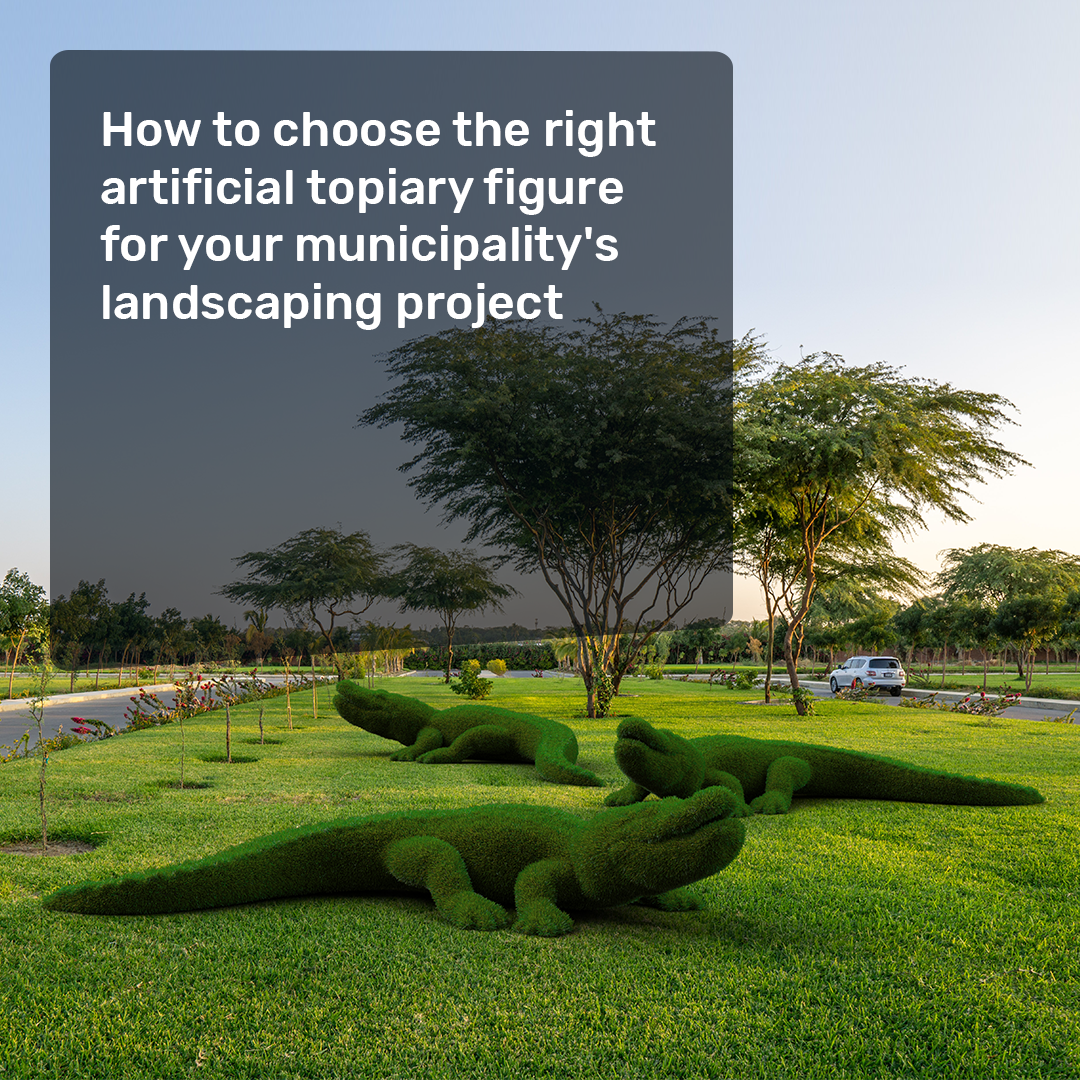Incorporating artificial topiary figures into municipal landscaping projects can add visual interest and enhance the beauty of public spaces. However, selecting the right topiary figure for your project is crucial for achieving the desired outcome.
Identify the Purpose:
Start by determining the purpose of the artificial topiary figure within your landscaping project. Are you looking to create a focal point, provide shade, or define a specific area? Identifying the primary function of the topiary figure will help guide your selection process and ensure that it contributes effectively to your project's overall goals.
Consider the Location:
The location of your artificial topiary figure is an essential factor to consider. Evaluate the available space, surrounding elements, and environmental conditions to determine the most suitable topiary figure. Choose a figure that complements the location's dimensions and style while considering factors like sunlight, wind, and proximity to other structures or natural features.
Match the Aesthetic:
Select an artificial topiary figure that aligns with the existing aesthetic of your municipality and the specific area where it will be placed. Consider the architectural style, color palette, and overall design of the surrounding environment to ensure that your chosen topiary figure contributes to a harmonious and visually appealing landscape.
Safety Considerations:
In public spaces, it is crucial to consider safety when selecting an artificial topiary figure. Ensure that the figure is securely anchored and constructed from materials that are safe for public interaction. Avoid sharp edges or protruding elements that may pose a risk to passersby, especially in areas frequented by children.
Customization Options:
To create a unique and memorable public space, consider opting for a custom-designed artificial topiary figure. Customization allows you to design a topiary figure that reflects your municipality's character, history, or local flora and fauna. This distinctive touch can contribute to a sense of pride and belonging within the community.
Identify the Purpose:
Start by determining the purpose of the artificial topiary figure within your landscaping project. Are you looking to create a focal point, provide shade, or define a specific area? Identifying the primary function of the topiary figure will help guide your selection process and ensure that it contributes effectively to your project's overall goals.
Consider the Location:
The location of your artificial topiary figure is an essential factor to consider. Evaluate the available space, surrounding elements, and environmental conditions to determine the most suitable topiary figure. Choose a figure that complements the location's dimensions and style while considering factors like sunlight, wind, and proximity to other structures or natural features.
Match the Aesthetic:
Select an artificial topiary figure that aligns with the existing aesthetic of your municipality and the specific area where it will be placed. Consider the architectural style, color palette, and overall design of the surrounding environment to ensure that your chosen topiary figure contributes to a harmonious and visually appealing landscape.
Safety Considerations:
In public spaces, it is crucial to consider safety when selecting an artificial topiary figure. Ensure that the figure is securely anchored and constructed from materials that are safe for public interaction. Avoid sharp edges or protruding elements that may pose a risk to passersby, especially in areas frequented by children.
Customization Options:
To create a unique and memorable public space, consider opting for a custom-designed artificial topiary figure. Customization allows you to design a topiary figure that reflects your municipality's character, history, or local flora and fauna. This distinctive touch can contribute to a sense of pride and belonging within the community.
